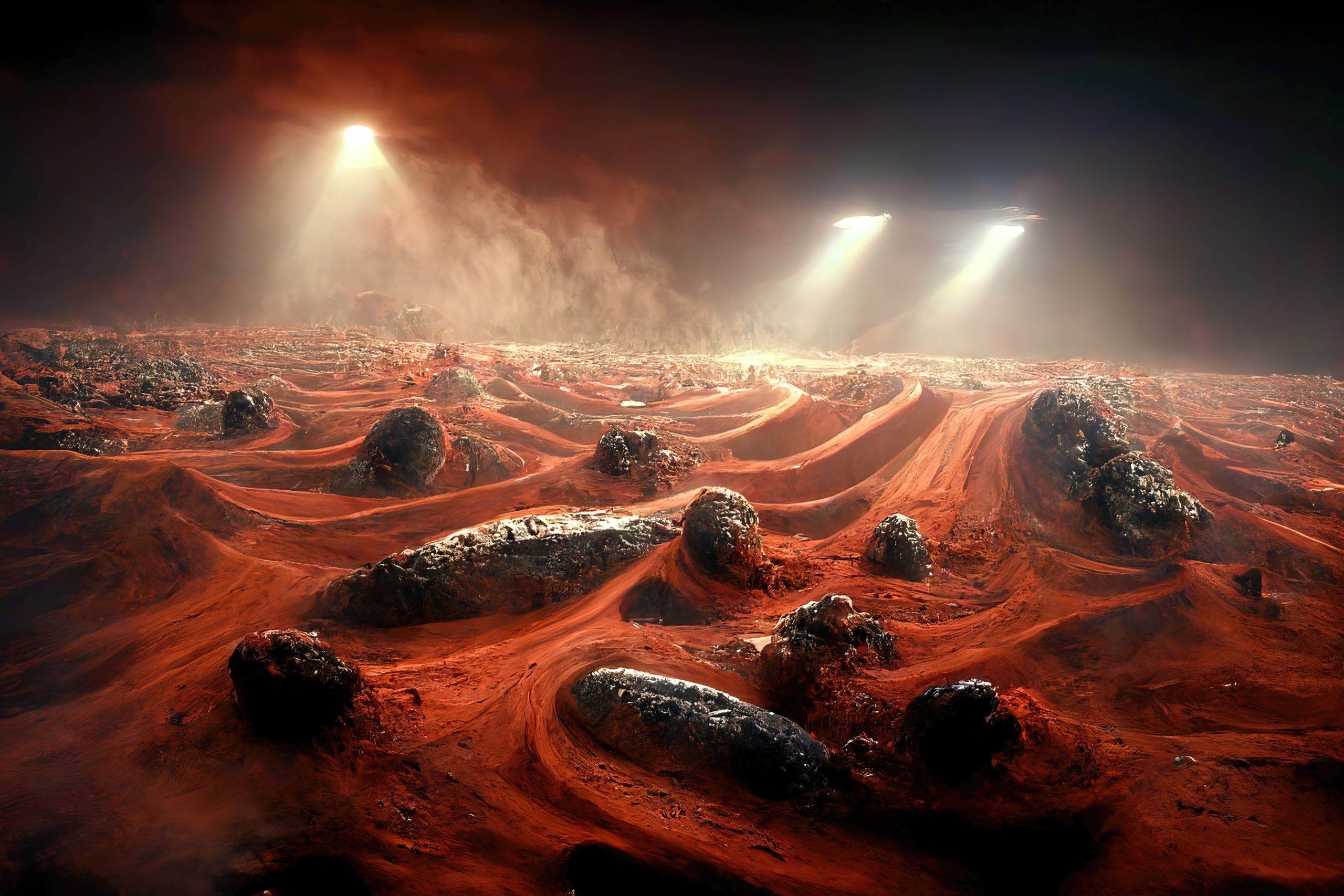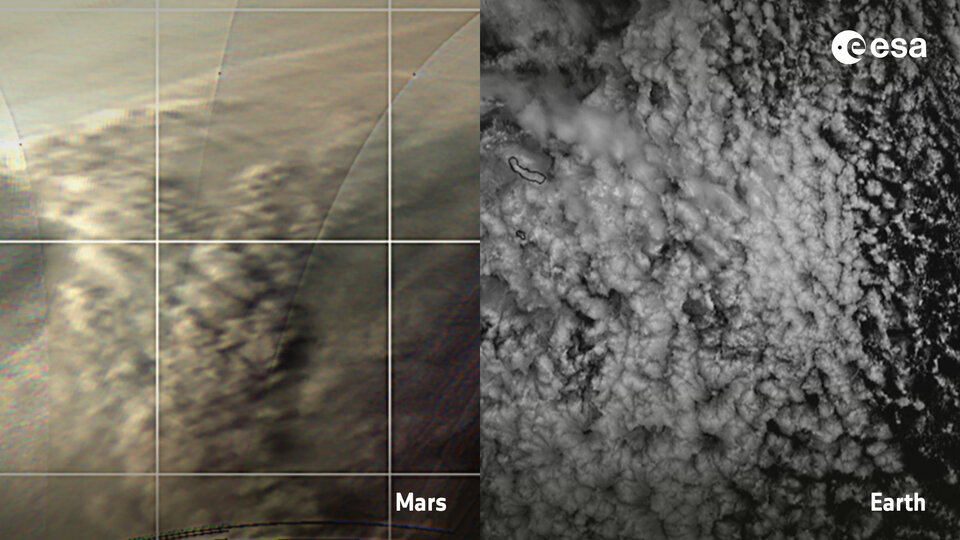It turns out that cloud systems on Earth and cloud systems on Mars are eerily similar, scientists have found.
Mars, our neighboring red planet, continues to surprise us with its many mysteries. While landers and rovers on the surface work tirelessly to try and find traces of life on Mars, several orbiting missions are studying the planet from space. Now, the Mars Express mission of the European Space Agency has revealed that Mars produces cloud patterns similar to those on Earth’s tropical regions. There is a vast difference between the atmospheres on Earth and Mars. In contrast to Earth’s rich atmosphere of nitrogen and oxygen, Mars’ atmosphere is almost entirely composed of carbon dioxide. Mars’ atmosphere has a density of less than one-fiftieth that of Earth’s. It is comparable to the density found 35 km above Earth’s surface.

Cameras in orbit
The cloud patterns of these two planets look remarkably similar despite their vast differences, possibly because similar processes formed them. An in-depth examination of two dust storms that took place near the martian North Pole in 2019 has been published in a new study. It was observed that storms were brewing around the receding ice cap during the spring at the North Pole. One camera used to study Mars was the MARCI camera on NASA’s Mars Reconnaissance Orbiter. Two cameras aboard Mars Express – Visual Monitoring Camera (VMC) and High-Resolution Stereo Camera (HRSC) were also used to image the storms from orbit. Over a period of days, the sequence of VMC images showed that the storms grow and disappear in repeated cycles, with similar shapes and features.
Incredible similarities

Images taken by the HRSC show spiral shapes in their wider views. Their origin is similar to that of extratropical cyclones in Earth’s midlatitudes and polar latitudes, which are between 1000 and 2000 km in length. Mars exhibits a distinctive phenomenon as seen in the images. According to them, martian dust storms consist of smaller clouds arranged in a regular pattern, like grains or pebbles. Earth’s atmosphere also has this texture in its clouds. Because hot air is less dense than cooler air, convection creates familiar textures. This type of convection appears to be closed-cell convection, where air rises within small pockets of clouds. Cooler air can sink below hot air in the gaps of the sky around cloud cells. On Earth, clouds are formed when water condenses in the rising air.
As seen by Mars Express, the dust clouds on Mars are formed through the same process, but the rising air columns are primarily made up of dust rather than water. As a result of the sun’s heat, dust-laden air rises and forms dusty cells. An area of sinking air surrounds the cells, which has less dust. As revealed by scientists, this gives rise to the granular pattern we are familiar with in clouds on Earth.
Source: curiosmos.com







